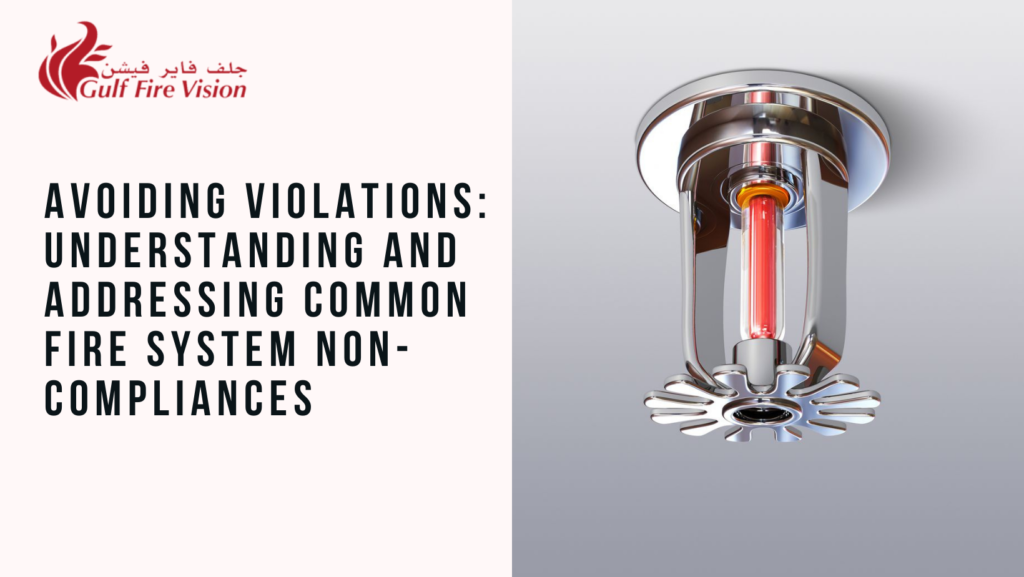
Fire safety regulations are put in place to protect lives and property, and compliance is essential to ensure the effectiveness of fire protection systems. However, despite the importance of adherence to regulations, fire system non-compliances are not uncommon. In this blog post, we’ll focus on common non-compliances related to fire sprinkler systems and explore strategies for addressing and preventing them.
Understanding Common Fire Sprinkler System Non-Compliances
1. Blocked Sprinklers: One of the most prevalent issues is the obstruction or blockage of sprinkler heads. This can occur due to improper storage, hanging objects, or accumulation of debris over time. Blocked sprinklers compromise the effectiveness of the system and can lead to delayed or insufficient response in the event of a fire.
2. Painted Sprinkler Heads: Painting over sprinkler heads is a common non-compliance that can impair their functionality. The paint can prevent the release of water or interfere with the activation mechanism, rendering the sprinkler ineffective in suppressing fires.
3. Missing or Damaged Sprinkler Heads: Sprinkler heads may be missing or damaged due to various reasons, including accidental damage, improper maintenance, or vandalism. Missing or damaged sprinkler heads create gaps in coverage, reducing the system’s ability to control or extinguish fires effectively.
4. Improper Spacing and Placement: Fire sprinkler systems are designed with specific spacing and placement requirements to ensure adequate coverage and distribution of water. Non-compliance with these requirements can result in areas of inadequate protection, leaving certain areas vulnerable to fire damage.
Addressing and Preventing Non-Compliances
1. Regular Inspections and Maintenance: Implementing a proactive inspection and maintenance schedule is crucial for identifying and addressing non-compliances promptly. Regular inspections by qualified professionals can help detect issues such as blocked or damaged sprinkler heads and ensure that corrective action is taken promptly.
2. Education and Training: Providing education and training to building occupants and staff members on the importance of fire system compliance can help prevent non-compliances from occurring. Training should cover topics such as proper storage practices, avoidance of painting over sprinkler heads, and the importance of reporting any observed issues promptly.
3. Documentation and Record-Keeping: Maintaining accurate records of inspections, maintenance activities, and repairs is essential for demonstrating compliance with fire safety regulations. Comprehensive documentation ensures accountability and provides a historical record of system performance and maintenance history.
4. Collaboration with Fire Safety Professionals: Collaborating with experienced fire safety professionals, such as those at Gulf Fire Vision, can provide valuable expertise and guidance in ensuring compliance with fire safety regulations. Fire safety professionals can conduct thorough inspections, provide recommendations for corrective actions, and assist in implementing preventive measures to mitigate non-compliances.
Fire sprinkler system non-compliances pose significant risks to life and property and must be addressed promptly and effectively. By understanding common non-compliances, implementing proactive measures, and collaborating with fire safety professionals, property owners and managers can ensure the integrity and effectiveness of their fire protection systems. At Gulf Fire Vision, we are committed to helping our clients maintain compliance with fire safety regulations and protect their premises against the threat of fire hazards. Contact us today to learn more about our comprehensive fire safety services and how we can assist you in avoiding violations and ensuring the safety of your property.
